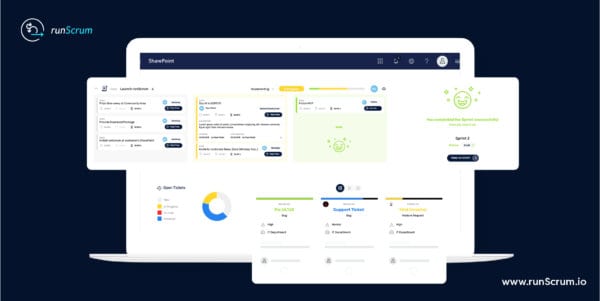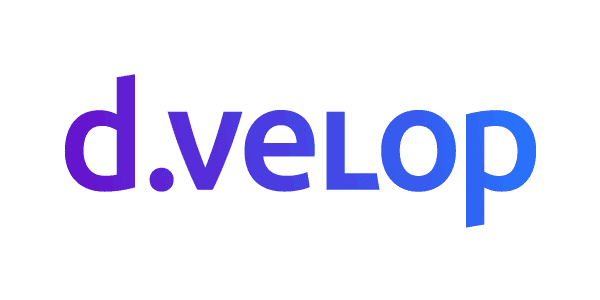Let’s talk project management/ Project managers are experts at juggling. They can plan budgets, review timelines, allocate resources, redefine targets, and assess reports like spinning knives or flaming batons, keeping everything in motion and sometimes seemingly only inches from disaster.
Multi-tasking is an essential skill set for project management. Any enterprise project involves multiple moving parts, and all of them need planning and organizing across multiple collaborating teams, utilizing limited and sometimes shared resources. It requires constant attention and creates a significant administrative workload.
That’s why processes are a project manager’s friend. Although there is a front-loading of effort in capturing processes, and mapping and managing the workflows to increase efficiencies, they soon pay dividends by ensuring that everyone knows what is expected of them, and when.
Even as the project matures and more processes are added to the stack, a well-managed process platform can provide an end-to-end view of the procedures, from inputs to outputs, across divisions and locations.
Ultimately, with good process management in place, process automation can come into play. Automated tasks can reduce repetitive actions for staff, allowing them to focus on value-adding activities, while also reducing the potential for errors and accelerating process execution times.
How process excellence boosts project management efforts
In part one of this blogging series, we share two of the four ways process excellence can support project management throughout the stages of a project, ultimately setting up automation to help teams and managers increase efficiency and effectiveness across the lifespan of a project. Read part two here!
1. See the big picture at initiation
It takes a lot of organizing to create a project plan and it begins long before the project is outlined. The scope, deliverables, and stakeholders all need to be identified, then the proposal approved before a detailed plan is assembled to capture how the project will play out, from the goals to the tasks and positions required.
All of these activities can be captured in processes. Everything from establishing a timeframe and budget to identifying the costs, materials, and human resources form part of procedures that can be documented. Those processes will then identify where potential risks, roadblocks and bottlenecks could occur.
Even at this early stage, effective process management offers significant gains:
- A great process management tool allows managers to attach supporting documentation to the process, ensuring that the most accurate and up-to-date information is always available to the relevant people, in one easy-to-access place.
- Process maps provide a visual guide to the procedures required for the project and where they interconnect. Managers can get an overview of who and what will be affected by any change at a glance, ensuring only the right changes are implemented, at the right times.
- New processes that evolve as the project takes shape can easily be added to the library, making sure that everyone is aware of them and their impact. Teams are kept in the loop and can immediately follow the new processes where they apply.
- Process management also ties directly into risk management. By connecting risk controls to the appropriate processes, managers can give executives confidence that potential threats to the enterprise are being tracked and minimized where possible.
- Training and onboarding will also benefit from sound process practices. New teams or team members can be quickly brought up to speed through relevant process documentation, ensuring a single-source-of-truth that they can access in whatever level of detail they need.
Automation outcomes: Well-managed processes are easy to track when automation is applied. Instead of actions like approvals slowing down the workflows, multiple digital signoffs can occur simultaneously, saving time and eliminating bottlenecks.
2. Show—don’t tell—how execution works
A project manager’s role during the execution phase of a project comes down to a significant amount of reporting. Overseeing the work includes a lot of organizing tasks, from tracking resources and communicating the progress to stakeholders, to arranging meetings with both supporters and workers, and problem-solving the numerous issues that arise.
Most of this reporting and organizing is data driven, and project managers can make this information visible within the relevant process maps. Projections and reports can be appended, as well as real-time assessments of the process active and wait times estimated within the process map itself.
Being able to generate reports automatically provides project managers with superpowers, ensuring less time is spent in data collection and more on analysis and response. These also ensure the latest information is available to teams and management at any time, so they can act on the most relevant data.
Automation outcomes: Digital forms are effective data collection tools, eliminating extra manual handling and input. Clarifying requirements allows for automatic data routing from online forms, which lets workers quickly and accurately submit information, regardless of their location. Similarly, standardized formats for reports or contracts will allow document generation to quickly produce consistently compliant documentation and records.
Read part two in this series to get the two remaining ways your organization can pave the way for automation in project management.
Multi-tasking is an essential skill set for project management. Any enterprise project involves multiple moving parts, and all of them need planning and organizing across multiple collaborating teams, utilizing limited and sometimes shared resources. It requires constant attention and creates a significant administrative workload.
Even as the project matures and more processes are added to the stack, a well-managed process platform can provide an end-to-end view of the procedures, from inputs to outputs, across divisions and locations.
Ultimately, with good process management in place, process automation can come into play. Automated tasks can reduce repetitive actions for staff, allowing them to focus on value-adding activities, while also reducing the potential for errors and accelerating process execution times.
How process excellence boosts project management efforts
In part one of this blogging series, we share two of the four ways process excellence can support project management throughout the stages of a project, ultimately setting up automation to help teams and managers increase efficiency and effectiveness across the lifespan of a project. Read part two here!
1. See the big picture at initiation
It takes a lot of organizing to create a project plan and it begins long before the project is outlined. The scope, deliverables, and stakeholders all need to be identified, then the proposal approved before a detailed plan is assembled to capture how the project will play out, from the goals to the tasks and positions required.
All of these activities can be captured in processes. Everything from establishing a timeframe and budget to identifying the costs, materials, and human resources form part of procedures that can be documented. Those processes will then identify where potential risks, roadblocks and bottlenecks could occur.
Even at this early stage, effective process management offers significant gains:
- A great process management tool allows managers to attach supporting documentation to the process, ensuring that the most accurate and up-to-date information is always available to the relevant people, in one easy-to-access place.
- Process maps provide a visual guide to the procedures required for the project and where they interconnect. Managers can get an overview of who and what will be affected by any change at a glance, ensuring only the right changes are implemented, at the right times.
- New processes that evolve as the project takes shape can easily be added to the library, making sure that everyone is aware of them and their impact. Teams are kept in the loop and can immediately follow the new processes where they apply.
- Process management also ties directly into risk management. By connecting risk controls to the appropriate processes, managers can give executives confidence that potential threats to the enterprise are being tracked and minimized where possible.
- Training and onboarding will also benefit from sound process practices. New teams or team members can be quickly brought up to speed through relevant process documentation, ensuring a single-source-of-truth that they can access in whatever level of detail they need.
Automation outcomes: Well-managed processes are easy to track when automation is applied. Instead of actions like approvals slowing down the workflows, multiple digital signoffs can occur simultaneously, saving time and eliminating bottlenecks.
2. Show—don’t tell—how execution works
A project manager’s role during the execution phase of a project comes down to a significant amount of reporting. Overseeing the work includes a lot of organizing tasks, from tracking resources and communicating the progress to stakeholders, to arranging meetings with both supporters and workers, and problem-solving the numerous issues that arise.
Most of this reporting and organizing is data driven, and project managers can make this information visible within the relevant process maps. Projections and reports can be appended, as well as real-time assessments of the process active and wait times estimated within the process map itself.
Being able to generate reports automatically provides project managers with superpowers, ensuring less time is spent in data collection and more on analysis and response. These also ensure the latest information is available to teams and management at any time, so they can act on the most relevant data.
Automation outcomes: Digital forms are effective data collection tools, eliminating extra manual handling and input. Clarifying requirements allows for automatic data routing from online forms, which lets workers quickly and accurately submit information, regardless of their location. Similarly, standardized formats for reports or contracts will allow document generation to quickly produce consistently compliant documentation and records.
Read part two in this series to get the two remaining ways your organization can pave the way for automation in project management.
For more great content, check out the Resource Centre
Reference:
Nintex. (2021). Pave the way for automation in project management – Part 1. Available at: https://www.nintex.com/blog/pave-the-way-for-automation-in-project-management-part-1/ [Accessed: 17th May 2021].









 Using a SharePoint Online list as a Knowledge source via ACTIONS in Copilot AI Studio
Using a SharePoint Online list as a Knowledge source via ACTIONS in Copilot AI Studio
